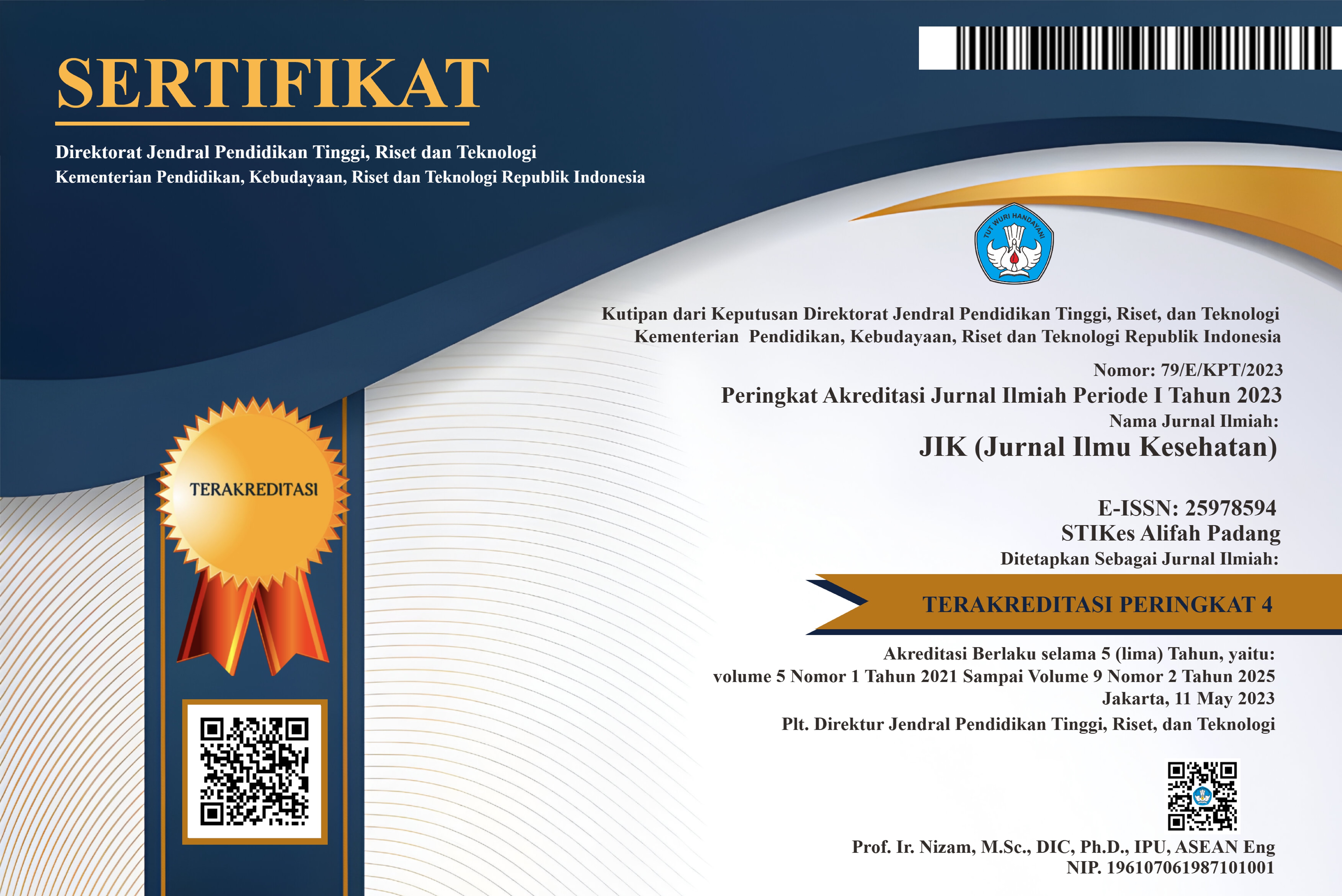The Ability of Phytoremediator Mustard (Brassica juncea) to Reduce the Level of Lead (Pb) in Soil
Abstract
Some studies have shown that levels of Pb in the groundwater around the highway positive containing Pb. This study aims to determine the ability of mustard (Brassica juncea) reduce levels of lead in the soil. This research uses experimental pre and post design. The object of this study is Pb in soils with mustard planting treatment to reduce levels of Pb. Implementation research held by making a planting medium that has been contaminated with Pb (NO3) 2. Then in the planting medium mustard planted as many as 10 polybags for a month. Statistical analysis was performed using the t test statistical test to see any significant difference before and seudah Pb planted with mustard. The results showed behwa Brassica juncea has the ability to reduce levels of lead in the growing media in the range of 9.8 to 13.3%. Of the statistical tests can be concluded that mustard (Brassica juncea) plants have the ability to significantly reduce levels of Pb contained in the soil.
Full Text:
PDFReferences
Ali M., Rina. 2010. Plant Mangrove Ability To Absorb Heavy Metals Mercury (Hg) and lead (Pb 2+). Veterans National Development University. East Java.
Alloway, B.J. 1995. Heavy Metals in Soils. Blackie Academic and Professional, Chapman & Hall, second edition.
Amanda, J.Z; David. C.W 2010, Heavy Metal and Trace Metal Analysis in Soil by Sequential Extraction: A Review of Procedures, International Journal of Analytical Chemistry, Hindawi Publishing Corportion
Asmawati, A; Taba, P; Liong, S, 2010. Remediation of Soil Contaminated Metal Cadmium Using Plants Green Mustard (Brassica juncea), UNHAS Repository, accessible via http://repository.unhas.ac.id/handle/123456789/2667
Donlon, D.L. and Bauder, J.W. A General Essay on Bioremediation of Contaminated Soil, http://waterquality.montana.edu/docs/methane/Donlan.shtml [6/06/2011]
Erny, Y .; Dwi, N.S; Rasti, S., 2003. Collection, Characterization and Preservation of Microbial Remediation, Proceedings of Pioneering Research Seminar and Plant Biotechnology
Erman, M. 2006. Utilization of Microbes in Bioremediation an Alternative Technology for Environmental Preservation. USU respository
Gao, M .; Liang, F .; Yu, A .; Li, B .; Yang, L, 2010. Evaluation of stability and maturity during the forced-aeration composting of chicken manure and sawdust at different C / N ratios, Elsevier.
Gottsching, L; Pakarinen, H, 2000. Recycled Fiber and deinking, Papermaking Science and Technology, publisher of TAPPI.
Hardiani.H. 2008 "Contaminated Land Restoration B3 waste from deinking process In Phytoremediation Paper Industry", Journal of Industrial Research. Vol. 2. 2. August 2008, ISSN. 1978-5852, Hal. 64-75.
Hidayati, N., Fauzia, S., Titi, J. 2005. Potential Centrocema pubescence, Colopongium mucunoides, and Micania cordota in Metal Cleaning contaminants In Gold Mining Waste. Bogor: Biology Research Center, Indonesian Institute of Sciences (LIPI).
Huang, D. L., Guang M.Z., Xiao, Y.J., Chong, L.F., Hong, Y.Y., Guo, H.H., Hong, L.L., 2005. "Bioremediation of Contaminated soil Pb by incubating with Phanerochaete chrysosporium and
DOI: http://dx.doi.org/10.33757/jik.v2i1.66
Refbacks
- There are currently no refbacks.
Copyright (c) 2018 JIK JURNAL ILMU KESEHATAN

This work is licensed under a Creative Commons Attribution 4.0 International License.
E-ISSN : 2597-8594 (Online) P-ISSN : 2580-930X (Cetak)
Publish by STIKes Alifah Padang
Jl. Khatib Sulaiman No 52 B Kota Padang. Telp 0751-7059849. Fax 0751-7059849. Website: www.stikesalifah.ac.id
Email : jik@stikesalifah.ac.id












